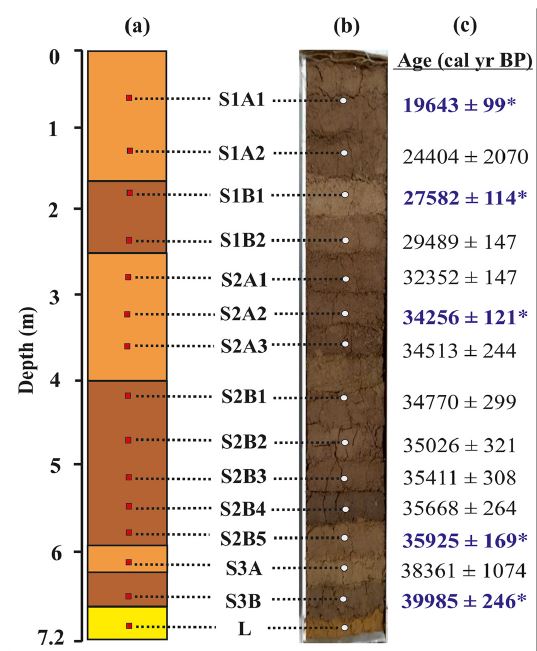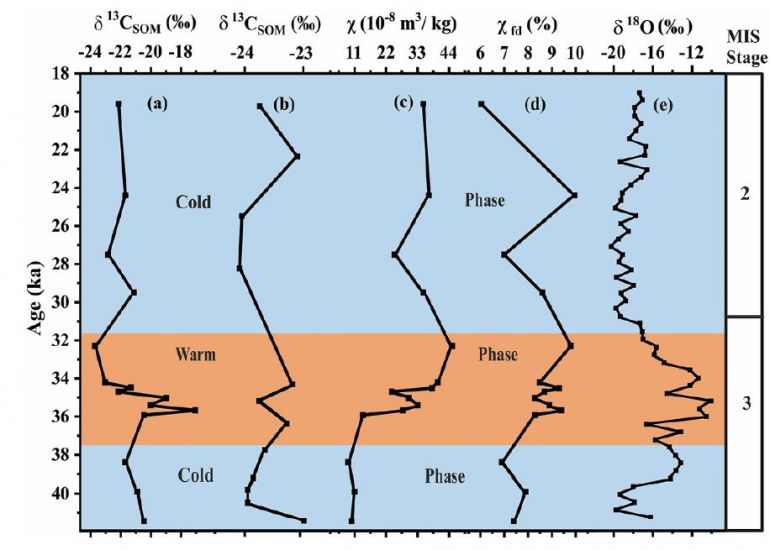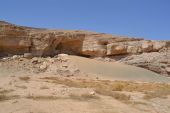The Spotlight #8
Posted by Francesca Ferrario in ECR News on 21 Jun 2022
The Quaternary International paper highlighted in the June 2022 release of “The Spotlight” brings us to the Kashmir Valley, where Mohammad Tauseef and coauthors investigated the paleoclimate and paleovegetation of 35.000 years ago. The paper is entitled “Mineralogical, geochemical, and magnetic susceptibility variations in the loess-paleosol sequence from Pattan, Kashmir Valley, India record an enhanced Indian summer monsoon around 35 ka” and can be accessed here.
The research
Loess-paleosol sequences testify the alternation of cold and warm phases: aeolian sediments (loess) are deposited under cold/dry climate, while paleosols form under warm/humid phases. The paper investigates a 7 m long loess-paleosol sequence located in Pattan (Kashmir Valley), with particular reference to the time interval between 40 and 20 thousand years ago.
The multi-proxy record includes bulk chemistry, clay mineralogy, stable isotope composition and mineral magnetic parameters. Chronological constraints are provided by radiocarbon dating. The sequence comprises a lower loess unit (L in Figure 1), older than 40.000 years. Upwards, three paleosols have been identified, characterized by A and B soil horizons.
Dating and chemical analyses reveal a prominent warm and humid phase occurred around 35.000 years ago, with increasing weathering through time; during this phase, the paleotemperature is estimated to be 7°C higher than during the previous phase of loess deposition.

Figure 1: Radiocarbon dates of the 7 m long loess-paleosol section. S1, S2 and S3 are paleosol units, while L is the loess unit.
The paleoclimatic reconstruction derived from the Pattan sequence is widely in agreement with other proxies recorded in the Tibetan Plateau (ice cores and water lake levels), which show similar variability and a warm phase centered around 35.000 years ago (Figure 2).

Figure 2: Comparison of paleoclimatic proxies recorded in the Kashmir Valley (a-d) and the Guliya Ice core from the Tibet plateau (e).
Why should we care?
Clay minerals variabilities in loess-paleosol profiles have been used to interpret weathering history and in turn infer the climatic conditions prevailing at the time of their formation. Similar inferences on paleoclimate result from magnetic susceptibility data. The research presented in this paper take advantage of a multi-proxy approach, to derive more robust conclusions and a more comprehensive reconstruction of the climatic variability in the Kashmir Valley. Performing similar research at other sites will lead to define the role played by the two main circulation systems in the area, namely the Indian Summer Monsoon and the westerlies.
The Author
The author, Mohammad Tauseef currently pursuing PhD at the Space Research and Planetary Sciences division, Physics Institute, University of Bern, Switzerland. Masters degree in Earth Sciences from Indian Institute of Technology Kanpur, India. Research Interests: Cosmic ray exposure age and terrestrial age of meteorites, cosmogenic noble gases (He-Ne-Ar), and 14C and 10Be production in meteorites, Quaternary paleoclimate. Application of geochemical proxies in sediments and loess-paleosols to study the past climatic changes.




